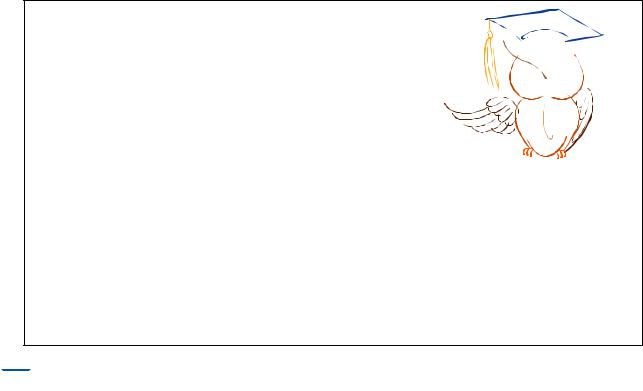
ENGLISH for Study and Work том 1
.pdfEnergy from GHG emissions
Converting coal mine ventilation air methane into a primary energy source - the first large-scale application
BHР Billiton Illawarra Coal, with the support of the Australian Greenhouse Office, has embarked on a major project to substantially reduce greenhouse gas (ghg) emissions from its West Cliff coal mine in the Illawarra region of New South Wales. The A$13 million West Cliff Ventilation Air Methane Project (WestVAMP) is the final step in proving a technology, first piloted at Illawarra Coal's Appin Colliery in 2001, capable of mitigating the bulk of the company's remaining greenhouse gas emissions, while producing electricity as a product.
ВНР Billiton believes “this project is an example of how technology can play a key part in reducing greenhouse gas emissions. This technology has the potential to be used in other coal mines".
WestVAMP will use 20% of West Cliff's available mine ventilation air to achieve a reduction in greenhouse gas emissions of 200,000 t/y C02-e.This is equivalent to producing enough electricity for 20,000 homes, or removing emissions from 45,000 cars from the environment each year.
President Illawarra Coal, Colin Bloomfield, said: "To date, the principal form of ghg mitigation has been through the consumption of mine methane drainage gas at the Appin and Tower power plants. These plants alone reduce Illawarra Coal's greenhouse gas emissions on average by 2.5 Mt/y C02-e. Further reductions in Illawarra Coal's greenhouse gas emissions can only be achieved through reduction of fugitive emissions of methane in the mine ventilation air."
Mr Bloomfield explained that methane has a global warming potential of over 20 times that of carbon dioxide. "Methane concentrations in mine ventilation air are typically less than 1.25% by volume which is not freely combustible with
300299876
conventional combustion technology. These and other factors have made reducing greenhouse emissions in mine ventilation a significant technical challenge," he said.
WestVAMP is based upon VOCSIDIZER technology developed by Swedish emission control specialist MEGTEC System AB. This converts low concentration methane to CO2 and water vapour through an oxidation process. High efficiency heat exchangers recover the large levels of thermal energy released to produce high quality steam. This steam is used to drive a conventional steam turbine.
Mr Bloomfield explained WestVAMP builds upon more than seven years of co-operation with MEGTEC. Besides cutting methane emissions, the project will generate б MW of electricity from the steam turbine which will be a source of energy to be used within the West Cliff Colliery. Commercial operation is planned for mid 2006.
VOCSIDIZER technology is an established method to clean air of low concentrations of VOC and other oxidisable pollutants, oxidising without generating NOx. More than 700 VOCSJDIZERS have been installed globally. As far back as 1994 the ability of the technology to ameliorate the effects of methane was demonstrated at a pilot plant in the UK. MEGTEC says concentrations as low as 0.1% are sufficient for the process-to be self sustaining without the addition of energy for oxidation.
Based on the conditions and needs of a specific mine, MEGTEC can design plants that convert the energy of the ventilation air methane into heat energy, electricity or cooling energy. VOCSIDIZER installations are modular by design and can therefore be relocated to a different ventilation shafts as needs dictate.
(From the Coal Magazine)
11. Write the summary of the text you have read following the steps in the summarising process given on the next page.
30129987

For You to Know
Some useful phrases to write a summary
The purpose of the first sentence in a summary is to acquaint the reader with the summarised text. The first sentence, therefore, includes the name of the author of a summarised text, its title, and the main idea. It uses the present tense. Below are some possible patterns that you may use in your summaries.
According to (name of the author) in his/her article (its title), … (main idea)
(Name of the author) in his/her article (its title) discusses … (main idea)
(Name of the author) in his/her article (its title) states/ describes/ explains/ claims/ argues … (main idea)
When continue, you may use the following patterns also adding some logical connectors (such as further, also, in addition, furthermore, moreover, etc.).
The author continues/goes on to say … The author (further) states that …
The author (or his name) concludes that …
30212998

 Grammar Reference:
Grammar Reference:
Present Simple Active.
Peer evaluation
11. Pair-work. Compare your summary with your classroom partner’s and ask him/her to evaluate it according to the requirements for summaries listed above.
Follow-up
12. Whole-group work. Come up with the class summary.
3031299

Unit 8 Structuring an Abstract
Focus on
•abstract and its definition
•functions and characteristics of an abstract
•phrases for writing an abstract
•writing an abstract
By the end of the unit you will be aware of:
•what an abstract is
•functions an abstract performs
•different characteristics of abstracts
and have practiced in writing abstracts using appropriate phrases
Lead-in
1.Answer the following questions.
1.Have you ever written any abstract (Ukr. анотація)?
2.Have you ever read any abstract? If yes, where?
3.Can you describe its peculiarities?
2.Pair-work. Share your ideas with a partner.
Discussion 
3. Pair-work. Read the definition of an abstract and discuss with your partner the functions an abstract performs.
An abstract is a short account of a paper placed before it.
304123

4. Compare your ideas with the following list of important functions that an abstract performs.
An abstract:
•serves as a short version of the paper, which provides the most important information;
•helps the potential audience to decide whether to read the whole article or not;
•prepares the reader for reading a full text by giving an idea of what to expect;
•serves as a reference after the paper has been read.
5. You are going to write some abstracts. Before writing read the following:
For You to Know
The abstract has certain textual and linguistic 
 characteristics. It:
characteristics. It: 



¾ consists of a single paragraph;
¾contains 4-10 full sentences;
¾tends to avoid the first person and to use passive voice (e.g., “The data are given about …”);
¾rarely uses negative sentences.
 Grammar Reference:
Grammar Reference:
Present Simple Passive.
6. Match the phrases given in the columns of the worksheet below that are recommended to be used while writing an abstract.
305421




